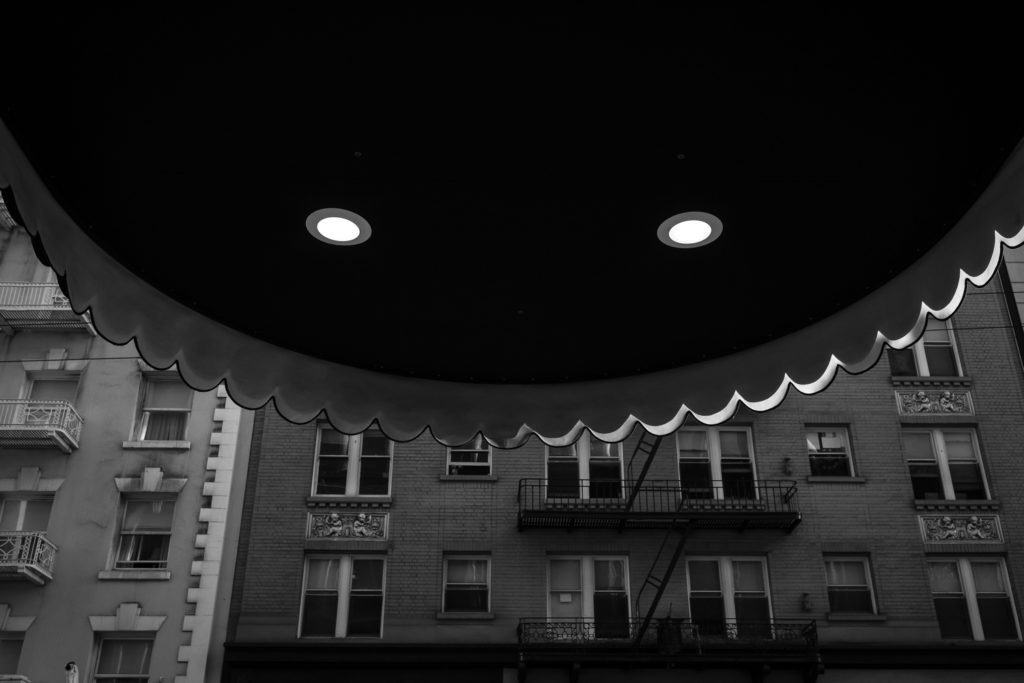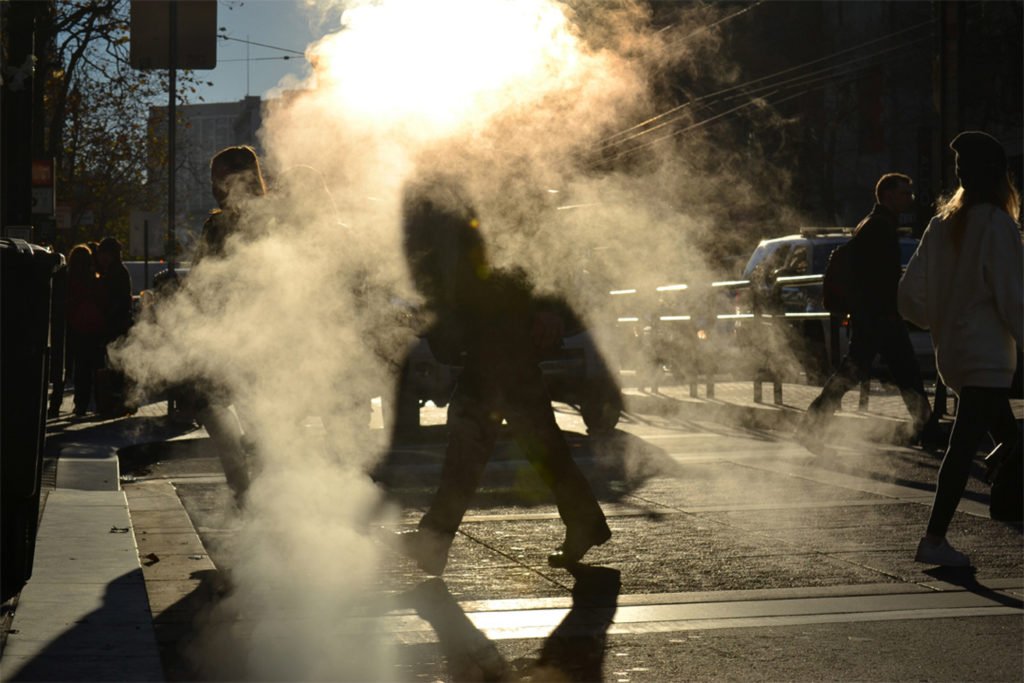
BA: Where are you from and how did you first get into photography?
JS: Well I was born in Michigan and grew up in North Carolina. I moved out to San Francisco in 2010 and have been in the San Francisco Bay area ever since. When I first moved to San Francisco all I could afford was a studio apartment in the notorious Tenderloin district. I began documenting the things I would see in my neighborhood and on my way to work with an iPhone 3 or whatever was available, an old Nikon…Fights, crime scenes, crazy characters— you name it, the place was begging to be photographed.
I’ve spent some time walking through there. But it’s a bit uncomfortable making photos there, at least for me.
Now, I wouldn’t take pictures there like I used to. Too much to lose/risk so I avoid it for the most part. At the time I was also working as a paramedic in San Francisco so between my neighborhood and my work life I was getting my days and nights filled with off the wall craziness 24/7
What do you mean “lose/risk?” Would you be physically attacked for photographing there? Or yelled at? Or?…
Yes, physical harm is always a probable outcome there. On certain corners they are actively drug dealing and it’s just too sketchy to be snapping photos…. the main reason I avoid it is the possibility of losing my gear. My livelihood depends on my cameras and it would be a huge hit to have it taken/broken.
Do you consider yourself an adrenalin junkie?
Yeah, I’ve come to realize that I am the most happy when life is coming at me full speed. Routine for me is a recipe for depression. I think that’s why I was drawn to my line of work and also photographing in the street.
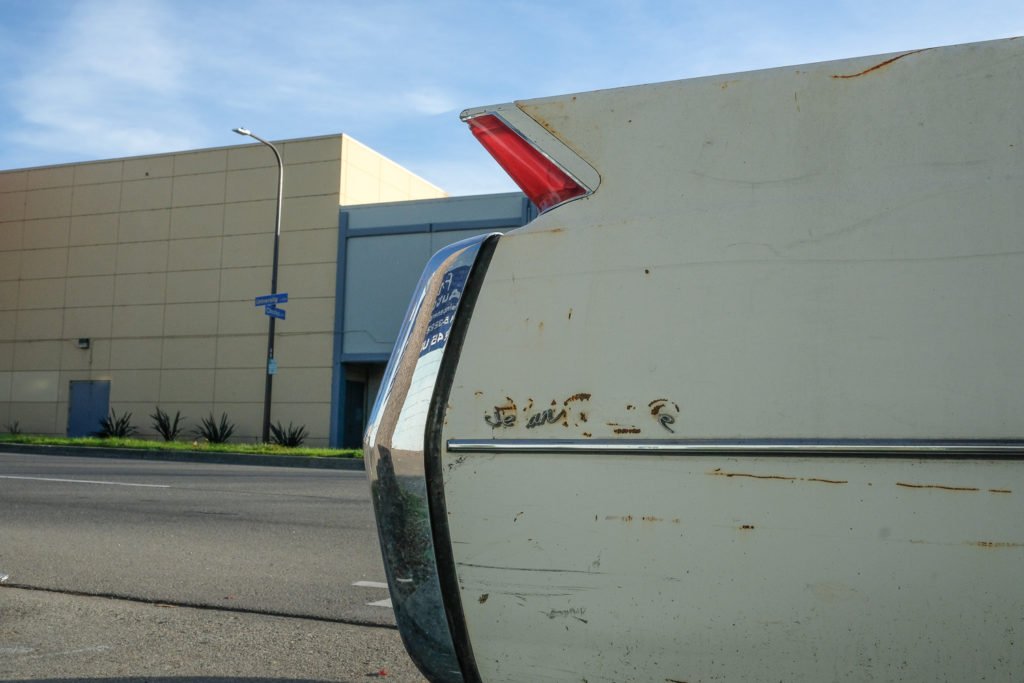
Were you a paramedic before moving to SF? How about photography? Did you take pictures before moving there?
I became a paramedic after moving to SF. Struggling to make rent waiting tables, I went that route. As for photography I did a lot of traveling back in the early 2000s and I photographed all the time but it wasn’t a conscious effort to get an aesthetically pleasing photo. I would say After moving to SF that’s when I discovered street photography, quite by accident. I just turned 40 so I did grow up shooting film but not as a practice of making art but more just documenting things my friends and I were doing as kids do. If that makes any sense, haha.
What kind of photos were you making in the early 2000s?
Mostly humorous or strange subject matter, odd human behaviors, non sequiturs, and strange characters. Mostly with a mobile phone. Nonetheless I stopped photographing in that way and started focusing on the art of it more so than the shock value of certain subject matter.
What do you mean you “discovered” street photography. Do you mean you started taking photos of the Tenderloin, and then realized there was a tradition of that genre? Or did you already know something about it before you started taking those photos?
After taking these pictures of crazy characters and crazy things I would see, I was posting them to an Instagram account and started to gain followers, some of which I followed back and slowly discovered that there were people making artistic candid photos in the street and that there could be an artistic merit to the act of taking pictures aside from just sharing something weird or out of the ordinary. All of this happened in SF. Nothing prior to moving to SF.
San Francisco street shooters seem to have a particular affinity for off-beat characters. I know that’s common in a lot of street shooting all over. But it seems to be more of a focus in SF. Maybe because the city is crazier than most places? Who knows.
I would definitely agree with that. Aside from a rampant homeless problem and mental health crisis, San Francisco has always been a place for counter-culture and free expression. But now you have a situation where all of the counter culture and all of the social ills are literally bumping shoulders with the most privileged class of elites that have flooded into the city on the wave of tech companies.
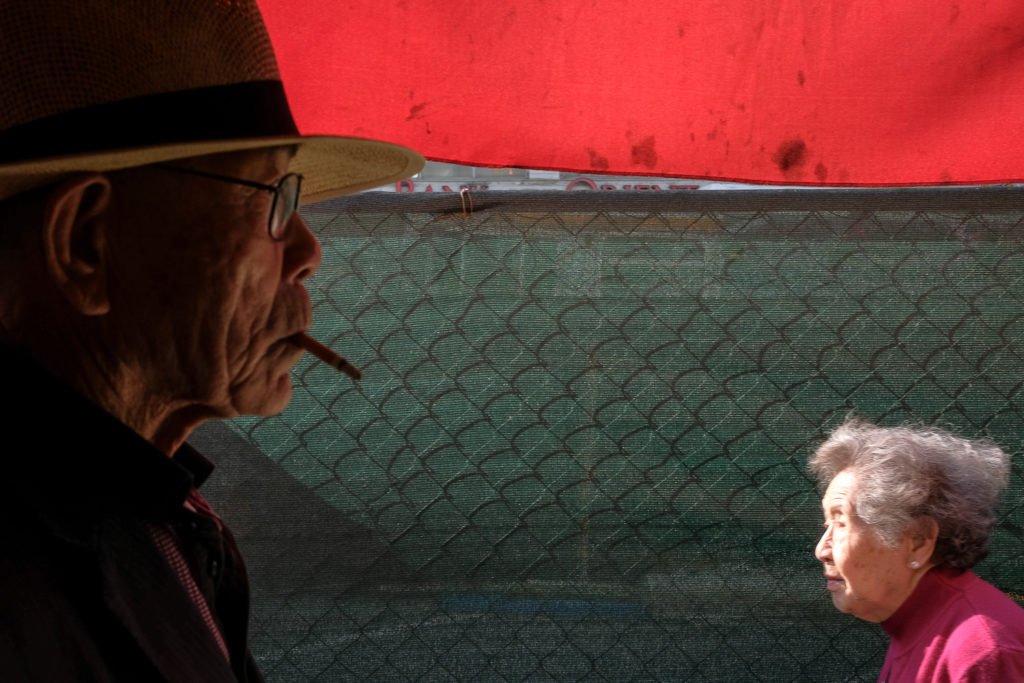
You said that earlier you would shoot crazy characters in the Tenderloin when you were starting out. But not now? Why not?
Yeah, I really have changed my approach over the past 3 years. I’m really trying to avoid “characters” . Photographing them as a side project or an ongoing series is always an option. But long-term I don’t wanna look back on my own work and only have documented society’s fringe individuals. There’s a greater challenge to be found out there besides characters.
What’s the greater challenge? Can you define it?
For me it is trying to find something that hasn’t already been done over and over. Something with replay value or rather something that brings the viewer in closer, something aesthetically pleasing (composition & color), and poignant. Wrangling unpredictability in the name of art will always be the challenge.
It seems Instagram was pretty key to your development. Is that the main platform where you shared and viewed photos initially?
Instagram was very key for me. It has connecting me to a much greater/bigger community that I never knew existed.
Were you also seeing work in other ways? Meeting people?
I joined SFCPC after randomly meeting some of the members while out shooting in the streets.
I know a few of those guys. How do you like that group?
I really love the SFCPC group. They have a wealth of knowledge and I’ve learned a lot from people who have been at it way longer than I have.
The street shooting scene there seems tightly knit, with people sharing work and influencing each other…
I do agree that there are a lot of people influencing each other as well. The Winogrand/Gilden-esque floating upstream in a sea of people snapping casually seems to be the preferred way to work here. I’m still wrestling with that style of photography trying to figure out if it has any artistic merit for me in the long run. It certainly is fun so the act of it it is almost a sport.
What about books and shows? Do you see work that way?
Books have been the last link in the chain for me. They are something that I’m just now getting into. I’m spending a lot of time with Magnum Contact Sheets, and aside from several street photography books. I’m really enjoying Gruyaert, Herzog (RIP) and Haas.
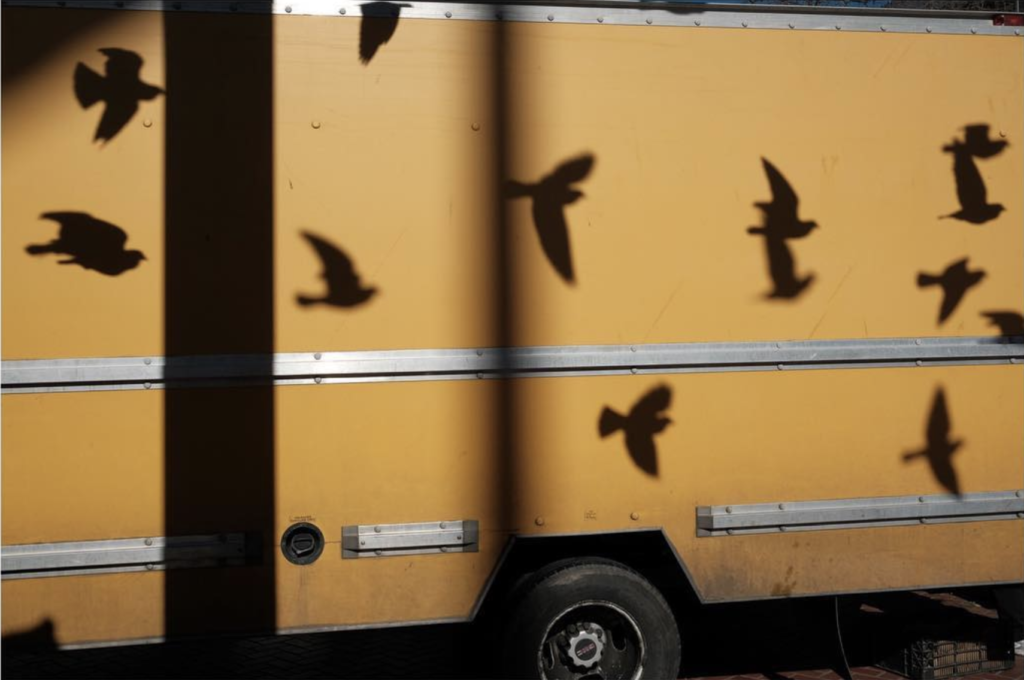
Do you have any photographic training?
No, I’m totally self taught. Photography really has been a solitary venture for me. I pretty much existed in my own little bubble until last year. I placed in the SF Streetfoto festival in 2018 and was honored to be a juror in this year‘s competition.
Looking at your photos, I think the link to Gruyeart, Herzog, and Haas makes sense. And Saul Leiter and Inge Morath. I’d also put them in that grouping.
Those are the photographs that I really strive to take for now. Not just shooting color because that’s what my camera does but consciously deciding what goes into the frame.
I don’t think anyone would consider those photographers adrenalin junkies. Their photos are more contemplative and subtle. Which is maybe a paradox in understanding you? Your photos are pretty quiet coming from an adrenalin junkie.
Yeah, my whole life feels like a paradox sometimes.
How so?
Hmm, that’s a hard one to answer, I think it all stems from a deep desire to be great at something — trying to prove myself to myself. As a result I’ve put myself in situations that don’t always cleanly match my personality in real life. I’m a pretty soft-spoken even keel person but I also like driving through San Francisco at 60 miles an hour in an ambulance. I think if I wasn’t so fortunate to have a lovely supporting wife I’d be off in the trenches like Capa (conflict photography has always been very alluring to me).
Yikes! I’m glad you’re not in the trenches.
Haha me too!
Do you ever shoot pictures or scout scenes while you’re on duty driving an ambulance?
Yes, to tie everything together my boss knows about and really supports my photography. He has put me on special shifts to only take photos of emergency scenes for training purposes and also to document crews working in the field to be use for things like EMS appreciation week and also training literature. To be honest that’s probably the only reason that I’m still working as a paramedic. These days 95% of my income comes from wedding and event photography.
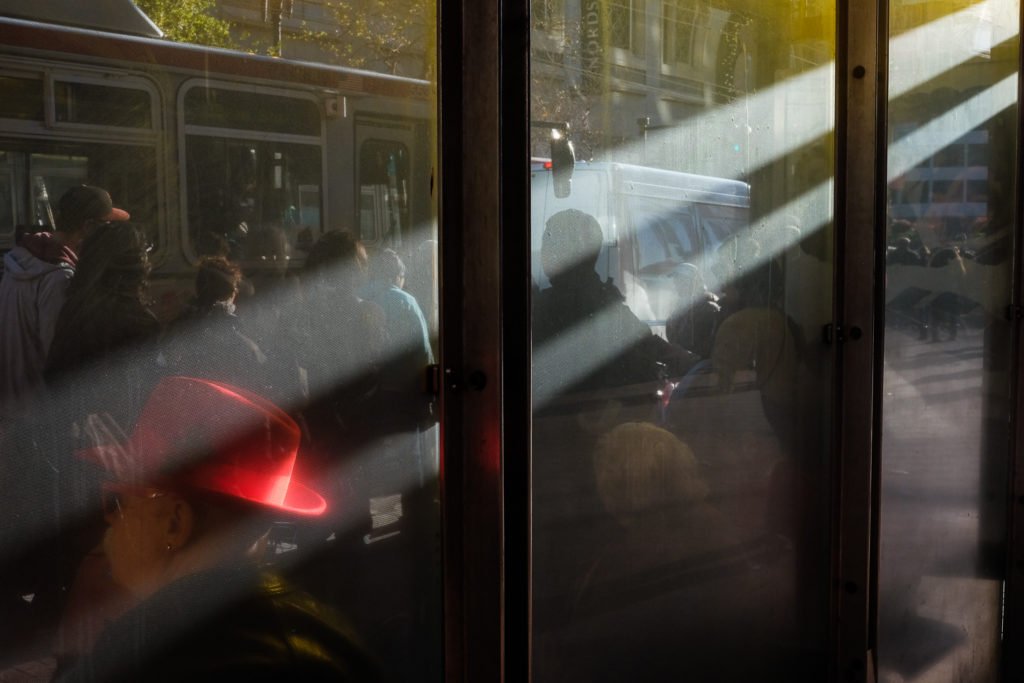
Ah, but that’s a different type of photo.
It is very different. It allows me to work on a documentary style of shooting aside from the street stuff. I’d be happy to send along some examples of that too. I don’t often post that stuff on Instagram.
Yeah, sure. Send some. Do those photos interest you in the same way your other work does?
No I wouldn’t say so. Occasionally an image shot on emergency scenes has some powerful element to it. But in general most of it looks like any old shot from a random newspaper.
I don’t know all the job dynamics of a paramedic. Could you maybe keep a small flash camera on your belt as you’re approaching accident scenes? Or is that ridiculous? I mean, the situations you’re exposed to are quite special and unusual compared to most of us.
Yeah, being discreet is definitely the most important thing while taking pictures like that. I never take pictures when I’m on a specific medic shift where I am the medical personnel. I only bring a camera for shifts where I’m specifically tasked to only take photos. I’ve definitely whipped out my phone before and snapped things on scene as a paramedic.
What about your normal street shooting practice. What’s your general routine?
I usually devote half or entire days to shooting. I live in Napa now which is about an hour and a half outside of San Francisco. Most of my photography gigs are in the city so I will piggyback a street photography session onto the beginning or end of the day depending on the event. Meaning if I get hired in the morning for a wedding at City Hall I’ll be out by 11 AM and then spend the rest of the day shooting around the city.
Do you have favorite haunts in SF? Market Street? The Tenderloin? Mission? Somewhere else?
I would Say Market St., Chinatown and the financial district are my most frequented places. Chinatown is my favorite by far. Color, unpredictability, lack of a clear and present corporate influence that seeks to paint everything beige. I love the financial district for the light, and high contrast. Market Street allows me to play Winogrand for a while snapping photos of people in their day to day lives.
What about Napa?
Ugh Napa.
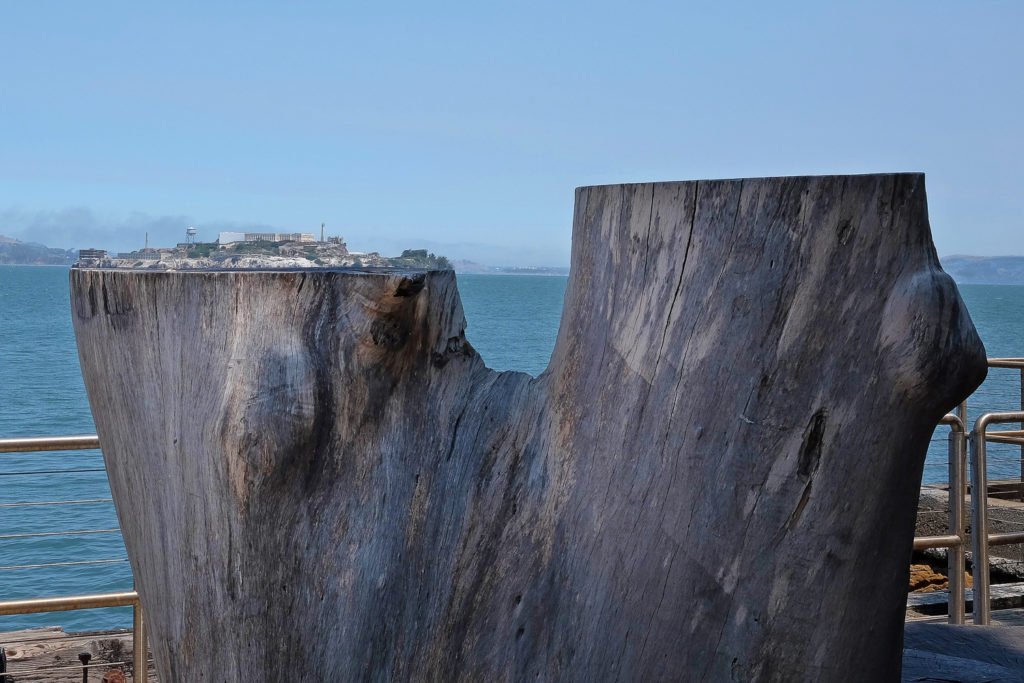
??
It sounds like a romantic wine-lovers paradise but it’s basically bland suburbia in the context of the photography that I do. I can never motivate myself to go shoot around Napa. I do love the old cars the old farmland aspect of it and occasionally they have events here that bring out lots of life but otherwise I stick to cities.
You can take the photographer out of the city but you can’t take the city out of the photographer.
Haha, I like that!
What made you move to Napa?
After my wife and I got married San Francisco was just too much. Too expensive, too crowded. And at that time I had just gotten hired by the fire department. Very long story short I tore my shoulder during Fire Academy and ended up getting bumped out of the academy on the final day of testing. This is what spurred me to start my own wedding photography side business in addition to being a paramedic. Fast forward from 2017 to now, the business has done really well and the medic stuff has taken a backseat. Do you sense the paradox starting to reveal itself? Haha – I’ve never talked about myself this much before. We’re both learning here.
Do you try to apply a street approach to wedding/event photography? Or is it a separate thing altogether?
Yes, aside from the ceremony and portraits, everything else is fair game for a street styled approach during weddings.
I’m in a similar situation geographically. Eugene is a smallish city and I think most street photographers would find it pretty tough sledding for material. The nearest larger city (Portland) is 2 hours away. What helps me is that 1. I’m not really a street photographer, or at least not exclusively, and 2. I believe strongly that good material can be found everywhere. And it’s true!
I can totally agree with that! Do you find when you’re out looking for something it never comes but as soon as you put your guard down the floodgates open up?
Yes, there’s some truth to that. Let the photos find you, and don’t try too hard to control them, etc. I don’t really understand how photos come at certain times and not other times. There seems to be an element to it beyond my control. Some outside force is operating which I don’t totally understand. It’s how on the negative sheet one little panel of 5 frames will have 3 winners, while all around it is a dead see of blanks, nothing. One certainty is that the more opportunity/time I give myself, the more I see and capture things. If I go out for 3 hours, I’m virtually guaranteed to come back with something. Put the time in and you’ll get results, no matter where or when. I’m pretty sure if you spend 3 hours walking around Napa you’ll find photos.
I agree. If I’m amped to go shoot somewhere or just in general I feel the universe rewards you with the same energy back.
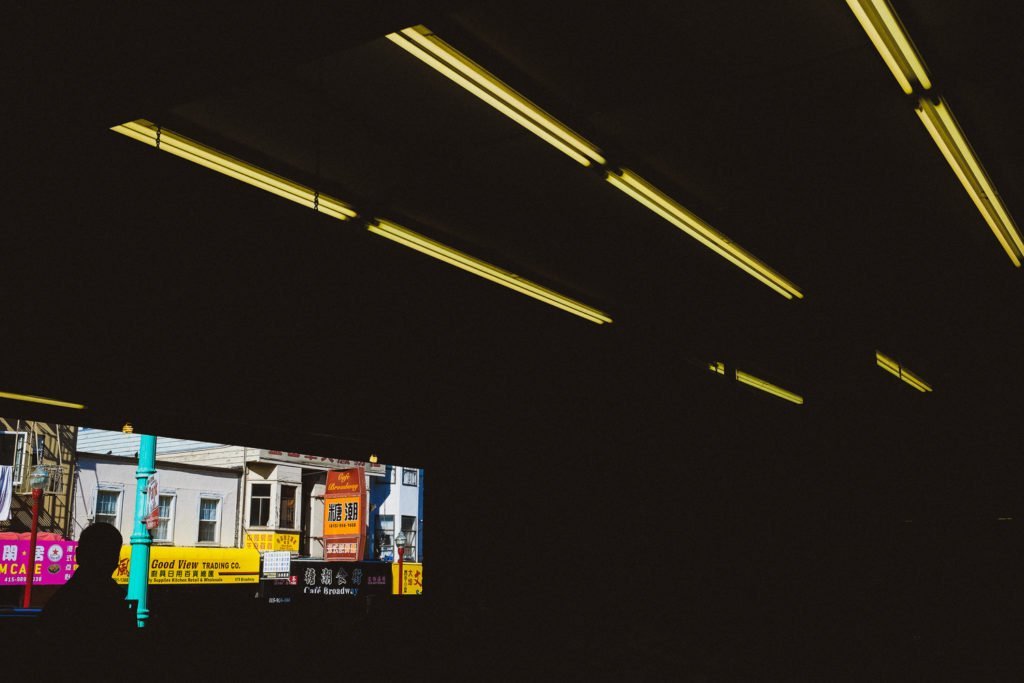
I think a lot of it is mental. A sense of optimism is essential for the type of photography we do, which relies on found situations and not so much on planning.
Haven’t been to Eugene yet but I was just in Bend for my 40th birthday. I wanted my wife and I to do a road trip from Napa to Seattle. We did it over the course of a week and a half and was wonderful. I shot about 20 rolls of film. And it really reset my spirit.
Did you find good material?
Yeah, I went crazy, shooting pretty freely. I’m not quite sure what I got yet, but that was kind of the point of the trip: to slow down with a bunch of film and not be so focused on “getting something” Definitely some good material presented itself.
How was shooting in Portland?
I had a great time, there were a few farmers markets and art fairs that I think produced some good stuff. It’s a challenge shooting with your wife by your side… she doesn’t want to spend her vacation sitting there and watching me work a scene for 20 minutes, ha ha.
Been there done that (the bored wife thing). I’ve been married 20+ years so we’ve developed a working method. It’s understood that in an interesting place I might move at a slower pace. A snail’s pace, perhaps? But we catch up to each other eventually. Like usually for meals.
Haha yes, I’ve had a similar discussion.
What brought you to Bend? It’s a bit off the N-S path to Seattle.
Everyone we told about our trip said oh you’ve got to go to Bend so we did. We also got to hit up Crater Lake which was amazing.
I think Bend feels like California. Maybe that’s why everyone down there told you to go there.
Could be! My wife and I are big beer drinkers as well.
Was Bend what you expected?
It was, it has a lot in common with Napa small town with a youthful vibe, it felt like home (maybe one day it will be).
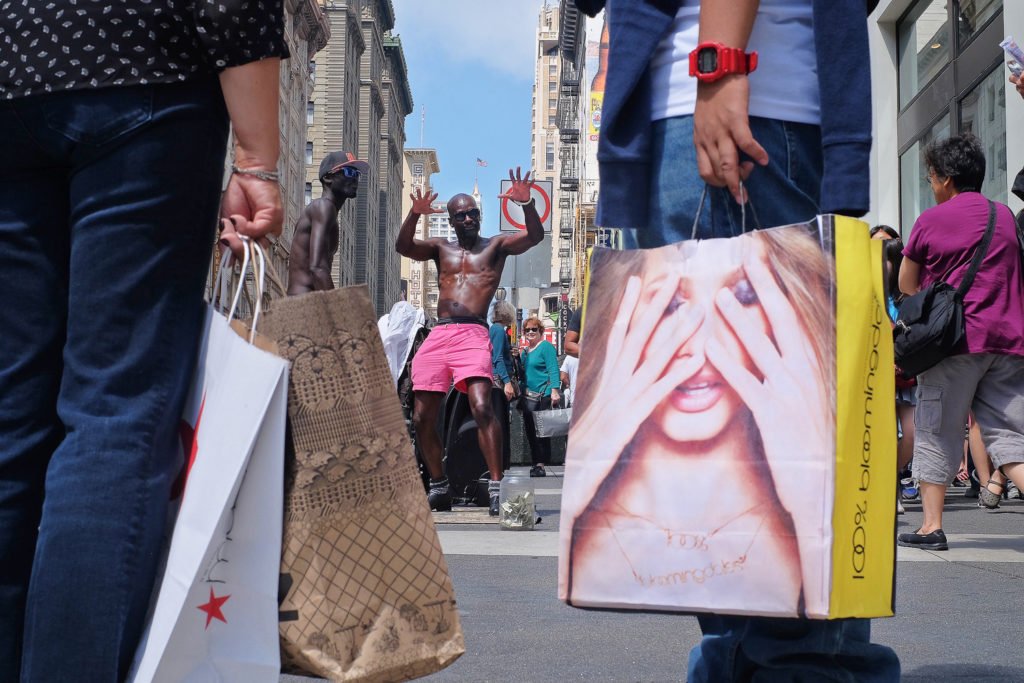
You mentioned film, and it was only recently (when you posted that video) that I realized you were a film shooter. It’s hard to tell on Instagram. Considering the hassle/expense, what’s your motivation for using film?
I love the idea of it in terms of a physical process, a chemical reaction. It’s been a very fun side hobby. Also to slow me down and get me off the mindset of burning 500 images to an SD card in one day. And at the end of the day I just think it looks better to my eye. Digital RAWs can be very sterile straight out of camera.
I guess film slows me down a little. But I tend to shoot it like digital, without much restraint.
It is expensive and cumbersome at times but it is great for those slow scenes where I can take my time composing.
Couldn’t you slow down and pace yourself the same way using a digital camera?
Well an unintended side-effect has been that I have already slowed way down to some extent which has been a more rewarding and far less cluttered workflow for me. But man, to be honest if I see a group of pigeons, they’re getting full digital burst mode turned on them for sure 😉
